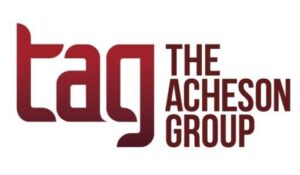The first 100 days of the Trump Administration have undeniably brought change to the US, and with all the pending plans and executive actions, President Trump’s declaration that “We’ve just gotten started” is undoubtedly a statement of continued change. So, today we are taking a look at what those 100 days have brought for the food industry, specifically, and why TAG sees a shift for industry “Back to Basics” as the best response and prevention to the various winds that continue to blow.
The two most common topics of discussion currently revolve around the tariffs and FDA terminations, so we’ll start with those:
- FDA terminations. In a previous article, we provided an analysis of whether the 10,000 HHS worker cuts would eliminate regulatory redundancy or reduce the safety of America’s food. Our position was that while the long term may see some positive results, the short-term is bound to affect food safety, and every facility needs to step up further to ensure their food, and supply chain, is as safe as possible – without relying on regulatory enforcement to do so. While some impacts of the cuts have been well-documented in the media – from inspector travel to communication to research – others are less known but just as, or more, impactful. One example is that of the reduced lab resources and personnel for the analysis of food at the import docks, resulting in the potential further delay of foods that are flagged for hold and analysis. Not only does delay severely impact perishables, but many non-perishables are experiencing multi-month waits.
- Tariffs. The economic outlook and disruptions caused by the tariffs have created a period of unpredictability, and thereby uncertainty, for importers, exporters. and manufacturers in general. Some companies are responding by buying up as much foreign supply as possible to try to stay ahead of the game; some have downgraded their earnings forecasts as consumers look to cut back; others are cutting costs, such as instituting travel bans; and nearly all are in discussion as to how to cover the added costs. At the same time, the supply chain is being further disrupted at the border as officials attempt to ascertain and enforce the latest updates. In time this will put pressure on the supply chain which, as we know, can lead to increased risk, substitutions, and an increased potential for economically motivated adulteration.
But there have also been some significant actions that are, or will be, impacting how food companies do business, such as new proposals around dyes, GRAS, infant formulas, and Salmonella.
- Synthetic Dyes. While the federal ban against synthetic dyes in foods continues to be a lead story, the phase out is currently focused on voluntary industry efforts, based on “an understanding” with major food manufacturers and “asking food companies to substitute petrochemical dyes with natural ingredients.” As such, FDA’s action revolves around working with industry to eliminate FD&C Green No. 3, Red No. 40, Yellow No. 5 and 6, and Blue No. 1 and 2 by the end of 2026 and requesting that food companies remove FD&C Red No. 3 sooner than the required 2027-2028 deadline. In addition, FDA is taking action to establish a national standard and timeline for the transition to natural dyes; initiating a process to revoke authorization for Citrus Red No. 2 and Orange B; authorizing four new natural color additives and accelerating the review and approval of others; and partnering with NIH to research how food additives impact children’s health and development.
- GRAS. As we discussed in a previous article, HHS Secretary Robert F Kennedy has directed the FDA to change the rules for GRAS. According to RFK, the designation was originally meant to allow companies to use common ingredients, like salt and baking powder, without safety-testing them first, but it is now being applied “to far too many ingredients.” Thus, in addition to directing closure of the self-affirmation “loophole,” he directed FDA and NIH to improve GRAS ingredient evaluation to identify those “making Americans sick.”
- Infant Formula. In its focus on safety, nutritional adequacy, and resilience of infant formula and its supply, FDA is working to begin a required nutrient review through a Request for Information for a comprehensive update and review of infant formula nutrients, and the increased testing for heavy metals and other contaminants. It is also extending the personal importation policy; encouraging companies to work with the FDA on transparency and labeling; increasing consumer and industry communication on significant developments; and collaborating with scientific bodies to address research gaps in short- and long-term health outcomes associated with formula feeding.
- Salmonella – On August 7, 2024, USDA FSIS published the Salmonella Framework for Raw Poultry Products proposed rule targeted at reducing Salmonella illnesses associated with poultry products. On April 25, 2025, USDA FSIS withdrew it. In the withdrawal notice, FSIS stated that, while it supports the goal of reducing Salmonella illnesses, its review of more than 7,000 public comments found several objections. Among the issues were FSIS’s legal authority to propose the final product standards, the scientific and technical information used to support the framework, and the potential economic impacts. In a statement to CIDRAP, FSIS said it will continue to assess its approach to addressing Salmonella in poultry products “in ways that will yield results that protect American consumers, not just impose regulatory burdens on American producers and consumers.”
While all of these have been at the forefront of the Administration’s first 100 days, none have resulted in regulation or final determination (except, of course, the final USDA action withdrawing the proposed Salmonella regulation). We can expect most to continue moving forward at some rate, but we can also expect the winds to continue the change.
Thus, TAG’s recommendation is for industry to hold itself steady with the basics. It has always been the food industry’s responsibility to make safe food, but this has never been more important than today as questions about the level of regulatory oversight of food companies come into question. Concerns around public health, such as whether we will be as good at detecting small outbreaks going forward, also loom. But foodborne illness is not going away, and we need to be vigilant as pressures mount on the food industry to focus on the basics.
Going Back to Basics will keep companies safer in this environment where the regulatory infrastructure is shifting but the risks of making someone sick and the subsequent consequences are as impactful as ever. So, making sure that your food safety management systems are functioning properly is critical, given that significant capital expenditure and new staff likely won’t be on the horizon for the foreseeable future.
TAG has helped food companies successfully weather the winds of change of numerous Administrations. Give us a call to help you through the latest.
All written content in TAG articles, newsletters, and webpages is developed and written by TAG experts, not AI. We focus on the realities and the science to bring you the most current, exacting information possible.





